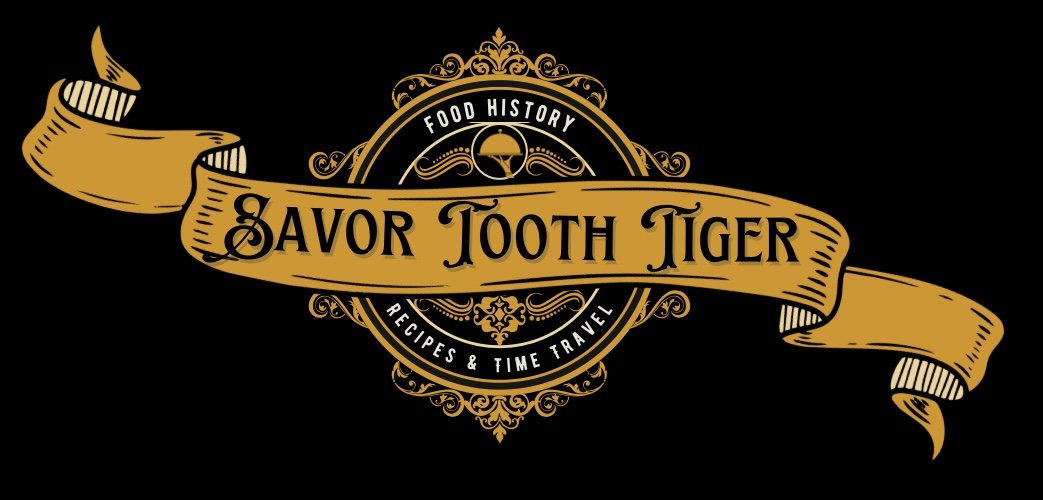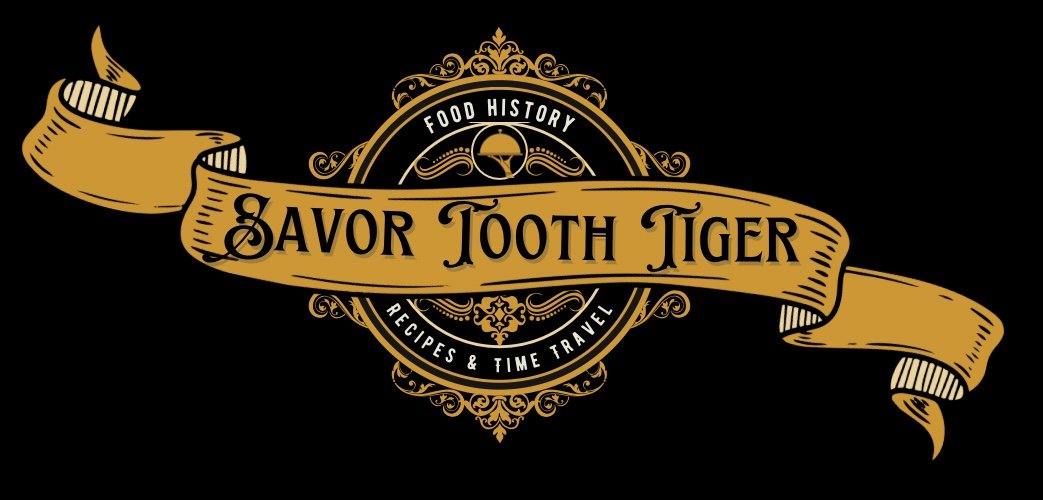Victoria Sponge
Food in Victorian England (1837-1901)/Victoria Sponge Cake
We’re going back to Victorian England to find out what the British were eating and bake a Victoria sponge cake. Queen Victoria was crowned in 1837 and this era lasted until her death in 1901. A lot happened in 64 years so buckle up! The Industrial Revolution, urbanization, railroads, & colonialism changed the way the British lived, ate and cooked. New inventions like mason jars, canned foods, refrigerated rail cars & steamer ships meant that food lasted longer and could travel farther. This era was marked by luxurious hotel restaurants, ladies tea rooms, pubs and plenty of street food. Maybe you’ve heard about some of the unpleasant Victorian dishes like jellied eel, boiled calf’s head and broxy. But It wasn’t all Mrs. Lovett’s meat pies and workhouse gruel! Victorian food was delicious if you could afford it. Victoria sponge, afternoon tea, Sunday Roast, Fish and Chips, and mince pies were all popular in this era.
What could be more Victorian than Victoria Sponge?
The Victorian Era saw many new kitchen tools. The flour sifter invented in 1819 by Jacob Bromwell. The Mason Jar- patented in 1858 by John Mason. The first rotary mixers were first patented in the 1850’s. Rotary beaters made mixing and baking cakes so much easier.Baking powder was invented in 1843 by English chemist Alfred Bird. This shortcut to light fluffy cakes made baking much easier than the days of yeast cakes or whipping air into eggs for hours like in the old days.
Jam is essential in this recipe but a few advancements needed to happen in this era to allow for jam to succeed. First, the mason jar and the canning process. The second, sugar needed to become cheaper for jam to be an everyday food. Glass jar canning was first invented by Nicholas Appert in France in the late 1700’s. His method involved heating food in glass jars and sealing with a cork stopper. The method was kept but the equipment was improved upon by American John Mason with his mason jar and screw top lid. Sugar became cheaper due to advancements in technology for producing sugarcane in English colonies and the invention of producing sugar from beet root. Suddenly even working class Britains could afford sugar in their tea for the first time. And jam!
Victoria Sponge is named after, you guessed it Queen Victoria! It was her favorite and she apparently ate it every day at afternoon tea. The tradition of afternoon tea with cakes, sandwiches, little tiered trays of goodies began in this era with Anna Duchess of Bedford and her good friend Queen Victoria. Victoria sponge is also called Victoria sandwich because the jam and cream are sandwiched between 2 layers of sponge. This is typically a simple cake that gets cut into delicate little slices for afternoon tea. I just decided to really go for it because for me with cake…more is more.
Recipe books became very popular in this era thanks to English authors Isabella Beeton and Eliza Acton. These books helped standardize measurements and techniques. Eliza Acton wrote her book Modern Cookery for Private Families in 1845. It was very popular but nowhere near as influential as Mrs. Beeton’s Book of Household Management, published in 1861. Mrs. Beeton’s book sold millions and went on to be published for years after her early death in 1865. Her book included several chapters on cooking with countless recipes but also such relatable tid bits on how to: fire servants, remove freckles, revive someone who’s been struck by lightning and how to apply leaches. According to Bill Bryson’s book, At Home, She apparently took passages word for word from Florence Nightingale’s autobiography as well as recipes from readers and from Eliza Acton. She also made some very strange claims in her book. She didn’t believe that cold beverages were good for health, especially after exercise. She also said quote” cheese was only fit for sedentary people”. I think my fellow cheese enthusiasts will agree with me that we object!
Let’s discuss technological advancements in food. At the end of this era, Britain had refrigerated rail cars and steam ships, coal, gas and even electric stoves, mason jars, canned food, ice and ice boxes, access to unadulterated trademarked packaged foods and even baby formula. Access to safe and nutritious foods made England healthier & stronger. The proof is in the height. At the beginning of the century, the average height of a Western European man was only 5’1. By 1900, the average man grew to 5’6.
The biggest change to the British cook was from open hearth cooking to solid-fuel iron ranges of the mid 19th century. They just kept improving. First with gas, then eventually at the turn of the century, electric, although most people feared electric cooking more than any other type.
Another major advancement: refrigeration. Not the modern refrigeration we have today but a home ice box and commercially available ice harvested from lakes. Before this major change, people ate seasonally as food became available and ate only what was available near them. Ice was harvested from American Lakes, shipped across the ocean after loosing some to melting. Ice was used for shipping food across the ocean and across country in refrigerated railroad cars. This was revolutionary. For the first time ever, food was available far and wide. Perishable foods like meat, seafood and dairy made their way across the globe. In England fish was available inland and the fish and chip shop was born. For the first time, Europeans and Americans were able to taste tropical fruits like Bananas and pineapples!
And not just at home…restaurants were becoming part of British culture. The posh Savoy hotel opened in 1889 in London, boasting electric lights, manager Cesar Ritz( who went on to found the Ritz hotel) and the greatest chef of the era, Auguste Escoffier. The Savoy Grill was the most fabulous restaurant of Victorian Britain. The interior design of the Verandah Cafe on the Titanic was inspired by the Savoy hotel. Many restaurants were male dominated spaces until the end of the era. Ladies did have tea rooms where they could have afternoon tea or luncheon with other ladies, but generally men and women didn’t dine out in public until the end of the century.
Ok, now for the weird, downright gross and not so pleasant topics. Jellied eels were common because they were cheap, nutritious and easy to come by. Boiled calf’s head was a Victorian treat. Buh. Both in it’s full form and in mock turtle soup. A major social issue of the Victorian era was poverty. Urbanization of England happened so quickly that housing was unsanitary at best. Many Victorians didn’t have enough to eat, leaving many to suffer from malnutrition. Rickets was common due to lack of understanding of vitamins and nutrition. The Irish potato famines led many Irish to leave their homeland for England and America. On the other end of the spectrum, those looking to lose a few pounds could follow William Banting’s popular Victorian Diet. Banting himself was once so large that he was forced to go down the staircase backwards to help relieve pain in his joints, which sounds dangerous for a wobbly ol’ guy. Then there’s colonization. The saying goes that The sun never sets in the British Empire and in the Victorian Era, England had its sights on India, which was rich in tea, spices and sugar. Anglicized versions of spice blends like curry powder made their way to Britain. Mangoes became a favorite of Queen Victoria. To this day, chicken tikka masala remains one of the Britain’s national dishes. Adulteration of food was common. Some of the most egregious examples of adulteration were chalk to whiten milk, used tea leaves being tinted with black lead and sold again, and cocoa powder filled with brick dust. Trademarked commercial products like Lipton, Heinz, HP sauce as well as new food laws made Victorian food safer.
Above is the recipe from Mrs. Beeton’s Cookery Book (1861) if you choose to recreate her recipe. The recipe below is much different, including non traditional whipped cream. Mrs. Beeton only tops her Victoria Sandwich with castor sugar.

Strawberry Jam
Ingredients
- 1 pound strawberries (scrubbed, tops removed, and sliced)
- 1/2 cup sugar
- Juice of half a lemon
- Strawberries and lemon have plenty of pectin so no additional pectin is needed here you can use jam sugar if you wish
Instructions
- Wash and dry strawberries well. Remove tops using a paring knife. Slice strawberries.
- Bring strawberries, lemon juice and sugar to a boil.
- The strawberries will begin to release their juices. Continue to stir every few minutes. Using a potato masher, break up the strawberries.
- Reduce heat to medium high and allow to cook for 15-20 minutes, stirring every few minutes using a wooden spoon or silicone spatula until it has reduced to a thick sauce. Be sure not to walk away. It will need stirring so that it doesn’t burn.
- Transfer the jam to a bowl or mason jar. Let cool at room temperature for at least 1 hour.
- It will look like a thick sauce when hot but when completely cooled, it will set into jam. Keep refrigerated.

Victoria Sponge Cake
Ingredients
- Cake Ingredients:
- 3 eggs
- about 175g unsalted butter, softened
- about 175g caster sugar (or granulated)
- 1 tsp vanilla extract
- about 175g self-raising flour
- 1 Tablespoon warm water
- Whipped cream:
- 1 pint heavy cream
- 2 teaspoons vanilla extract
- 1/4 cup powdered sugar
- 1/2-1 cup strawberry jam (I like Bonne Maman brand)
- Additional strawberries sliced for top
Instructions
- Preheat oven to 350 degrees.
- According to the Great British Bake off, the eggs(with shells on), butter and self raising flour should be of equal weight, about 175 grams. Using a kitchen scale, equally measure the ingredients.
- In a stand mixer with a paddle attachment, beat the softened butter for several minutes on medium until fluffy. Slowly add in the sugar.
- Add eggs to the mixture one at a time and the vanilla.
- Sift the dry ingredients in a separate bowl. Whisk together.
- Add dry ingredients to the bowl of eggs, sugar and butter. Then and the warm water. Only mix until smooth.
- Divide batter into 2 10-inch round cake pans. Make sure to grease and flour the cake pans and line the bottom with a round of parchment
- Bake cakes for 20-25 minutes until the sponge lightly springs back.
- Allow to cool completely before assembling.
- Whip the cream in a stand mixer with a whisk attachment. Add vanilla and powdered sugar. Whip until medium peaks form, about 5 minutes on medium-low.
- On a cake stand, layer one cooled cake. Add strawberry jam, then whipped cream on top.
- Gently place the second layer on top. Add more whipped cream, a dollop of jam and slices of strawberries. Garnish with mint, chamomile flowers or any small delicate edible flowers or herbs. Or if you want to stay traditional, just cake, jam and whipped cream with a dust of powdered sugar.








